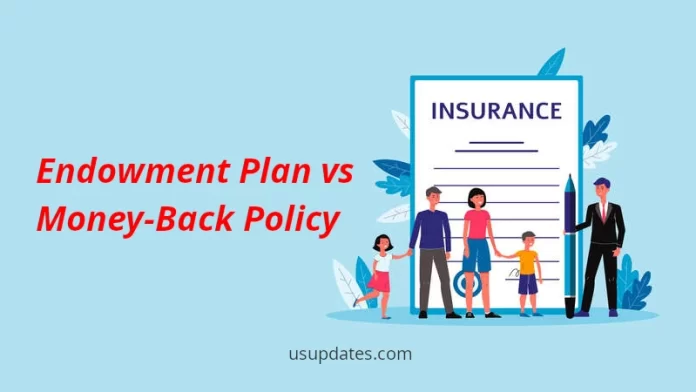When it is time to buy a life insurance plan, it can be a bewildering decision. With a plethora of alternatives to choose from, it can easily confuse a buyer, especially if it is a first-time buyer. Hence, it is important to know what you are getting into before zeroing down on one. The primary step in this process is understanding the jargon that is used in policy documents.
Once you have got a hang of the basic terminologies, the next step is understanding the different plans that are available to choose from. Two popular alternatives are endowment plans and money-back plans.
Let’s look at each of those and understand the similarities and differences between the two.
Table of Contents
What is an endowment policy?
An endowment plan is a life insurance policy that extends the scope of protection of a traditional life insurance plan. This extension is available by way of a savings component in your endowment plan. The premium paid for an endowment plan is divided into two components — one, towards protection for insuring your life and the second, towards savings which are paid at the time of maturity of the endowment plan.
An endowment plan is handy for those investors who want a long-term corpus accumulation like marriage, buying a car or house, or even saving for their retirement.
What is a money-back policy?
Money-back plans are an extension of an endowment policy where the policyholder is paid a specified percentage of the sum assured at specified regular intervals, instead of being paid in a lump sum amount, like in the case of an endowment policy. Thus, money-back plans are endowment plans with a liquidity benefit.
A money-back policy is suitable for those policyholders that are seeking risk-averse investment and require funds in the short term. These payouts in the future help the policyholder meet their liquidity requirements. However, in the event of the demise of the policyholder, the nominees are paid the entire sum assured without deducting the survival benefits.
This policy is suitable for risk-averse individuals who wish to save through an insurance plan and also maintain liquidity throughout. In case of the death of the insured person, the nominee gets the entire sum assured and the survival benefits are not deducted.
Similarities between an endowment policy and a money-back policy
Both endowment plans and money-back plans provide a death benefit and maturity benefit. Hence, they are preferred by policyholders looking for investment along with insurance coverage. Considering the dual benefits, the premium for these is steeper when compared to term insurance policies or pure insurance plans. However, both plans provide guaranteed maturity benefits and their investments are not dependent on the performance of capital markets like ULIPs. Considering guaranteed returns, the risk for both types of policies is low.
Difference between an endowment policy and a money-back policy
| Endowment policy | Money-back policy |
| An endowment policy is an insurance cum investment product. | Money-back plans are policies that have investment and insurance which is participatory in nature. |
| Endowment plans pay the sum assured and the bonus thereon after completion of the policy tenure if the policyholder is alive. | Money-back plans, on the other hand, pay a percentage of the sum assured at regular intervals |
| Endowment plans are generally available for a duration of 10 years to 35 years. | Money-back policies are available generally for a period of 5 years to 25 years. |
| Endowment plans enjoy a special feature when a loan can be obtained against the security of the policy. The insurance company offers a percentage of the surrender value as the loan. | Since the plan periodically pays a portion of the sum assured to the policyholder, no facility for a mortgage is available against a money-back policy. |
These are some of the differences that you must note when buying either an endowment policy or a money-back policy. Whether your investment objective is to receive a lump sum amount at the end of the policy tenure or receive periodic payouts, you can choose among the two types of plans. A life insurance calculator is a nifty tool that you can use in the comparison process, deciding which policy fits your best.
Also Read: How Do DUIs Affect Your Auto Insurance?








